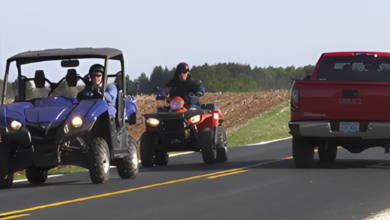Feb. 11, 2008 – Seeking solutions to the F&I and new unit sales contradiction
ST. PAUL, Minn. — When new unit sales are occurring the most often, the less dealers are apt to make per vehicle purchased in F&I revenue.
On the other hand, when new unit sales typically drag, the F&I profit per vehicle increases.
The causes — and possible remedies — for this contradiction commonly found in dealerships were outlined by Mike McIntyre of Gart Sutton and Associates, who has begun hosting a F&I certification workshop called Finance & Insurance Retail Specialist Training (F.I.R.S.T.).
The two-day workshop, sponsored by GE and Powersports Business, focuses on a number of topics, from F&I product presentation to F&I job skills to regulatory compliance and ethical business practices.
The workshop also seeks to improve F&I profitability, something many metric dealers either do not take advantage of or have very little success at, according to a Powersports Business national dealership survey taken in 2007. That survey found on average F&I accounts for only 2 percent of metric dealers’ total revenue.
McIntyre emphasized three keys that could positively impact that statistic during the first day of the two-day workshop held recently in St. Paul: create a F&I menu, log all F&I sales activities and ensure that 100 percent of the dealership’s F&I products are offered to 100 percent of the store’s consumers 100 percent of the time.
The latter practice, what McIntyre referred to as the 300 percent rule, figures to increase sales by simple mathematics — the more people that see a product, the more likely it is to sell — and has an important legal impact. Consumers could rightly say in a legal proceeding that they were discriminated against because they were not offered all of a dealership’s insurance products.
An F&I menu, a listing of all a dealership’s F&I products with their appropriate prices, ensures the 300 percent rule will be followed by staff. Menus are often showcased to consumers with different product groupings, with potential price breaks given on larger packages.
Part of the F&I sales process should include a log, which could feature the consumer’s name, date of transaction, model type and which F&I products the consumer purchased. The log provided by Gart Sutton & Associates also calls for the cost and the gross of each F&I product so dealers can assess the department’s F&I per vehicle sold, which ranges from $350-550, according to data collected from Sutton’s 20 groups.
The log also allows a dealership to try to recapture potential lost F&I revenue. It’s not uncommon, McIntyre said, for dealers’ F&I income per vehicle sold to lessen during busy times of the year. After all, there are more buyers to deal with, so often less time is spent with each consumer. The log allows F&I personnel to go back to that consumer at a later date via a phone call and remarket the F&I products, like an extended service contract that can be offered after the day of sale.
To boost F&I sales, McIntyre offered a number of selling tips, including the reality that the F&I process is often “the most stressful time” for a new bike or ATV buyer. To ease that stress, McIntyre suggested F&I staff encourage consumers to ask questions and when a question is asked, to stop the sales process immediately and provide an answer. That answer should always end with the product’s benefit to the consumer, or what McIntyre called the “What’s in it for me?” line.
He also stressed the importance of having everything about the F&I sales process — including the cost — be open and viewable by the consumer. “Don’t ever hide anything,” he said. “Once you’re viewed as a shark, you’re done.”
Consumer perception of the insurance packages, not only the value they bring to the consumer but the dealership’s good-faith intentions, is key to the sales process, McIntyre said.
— Neil Pascale

